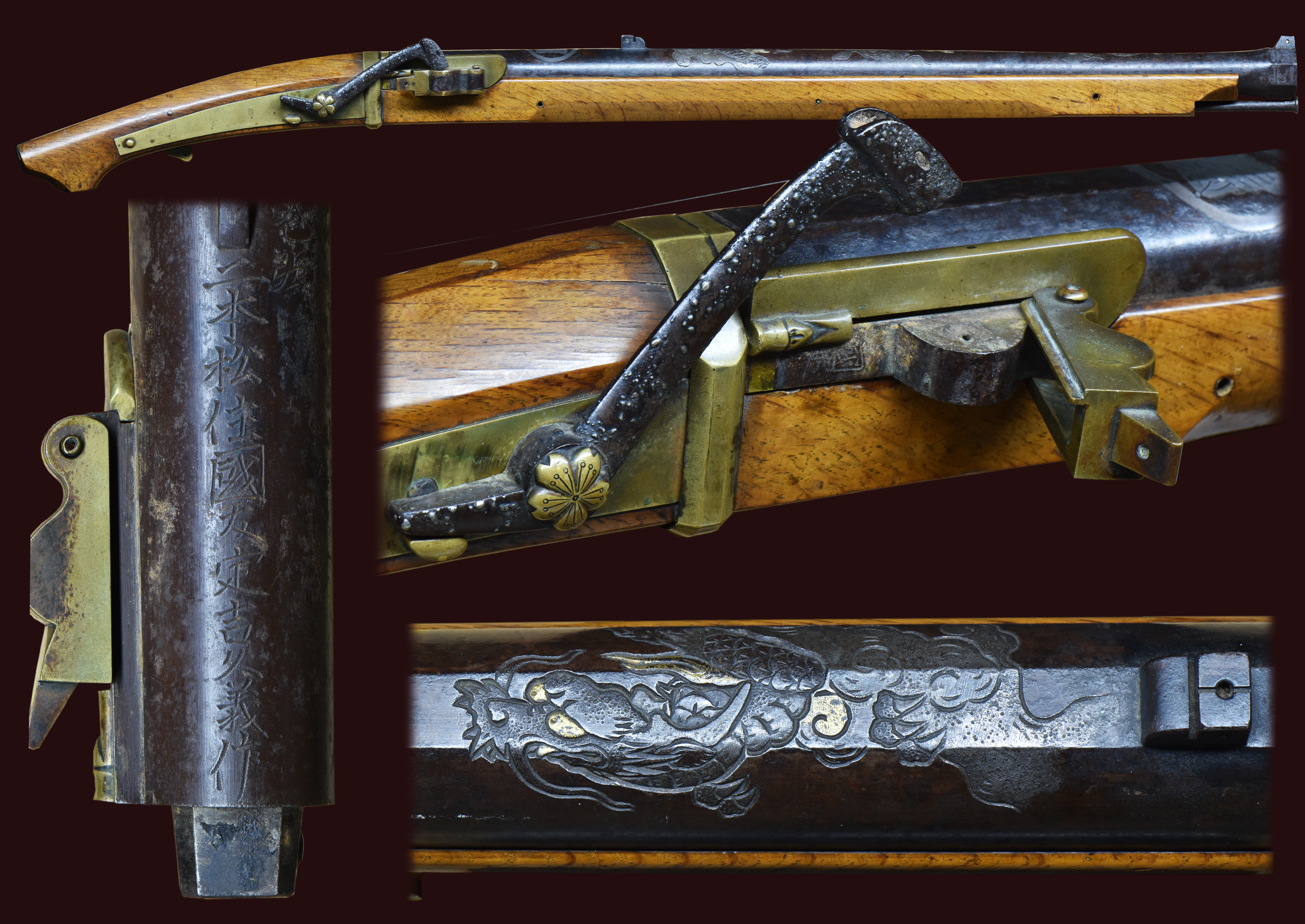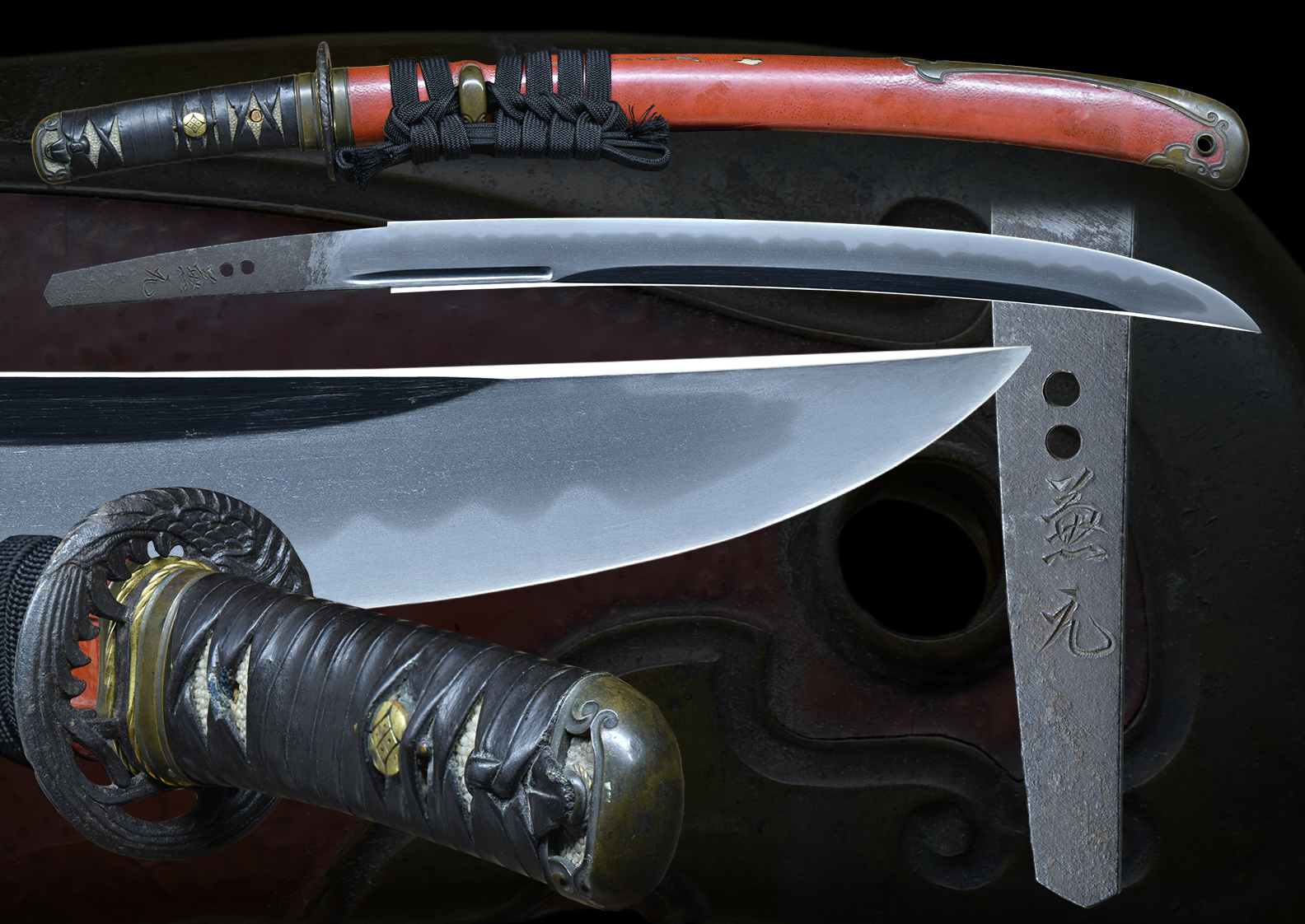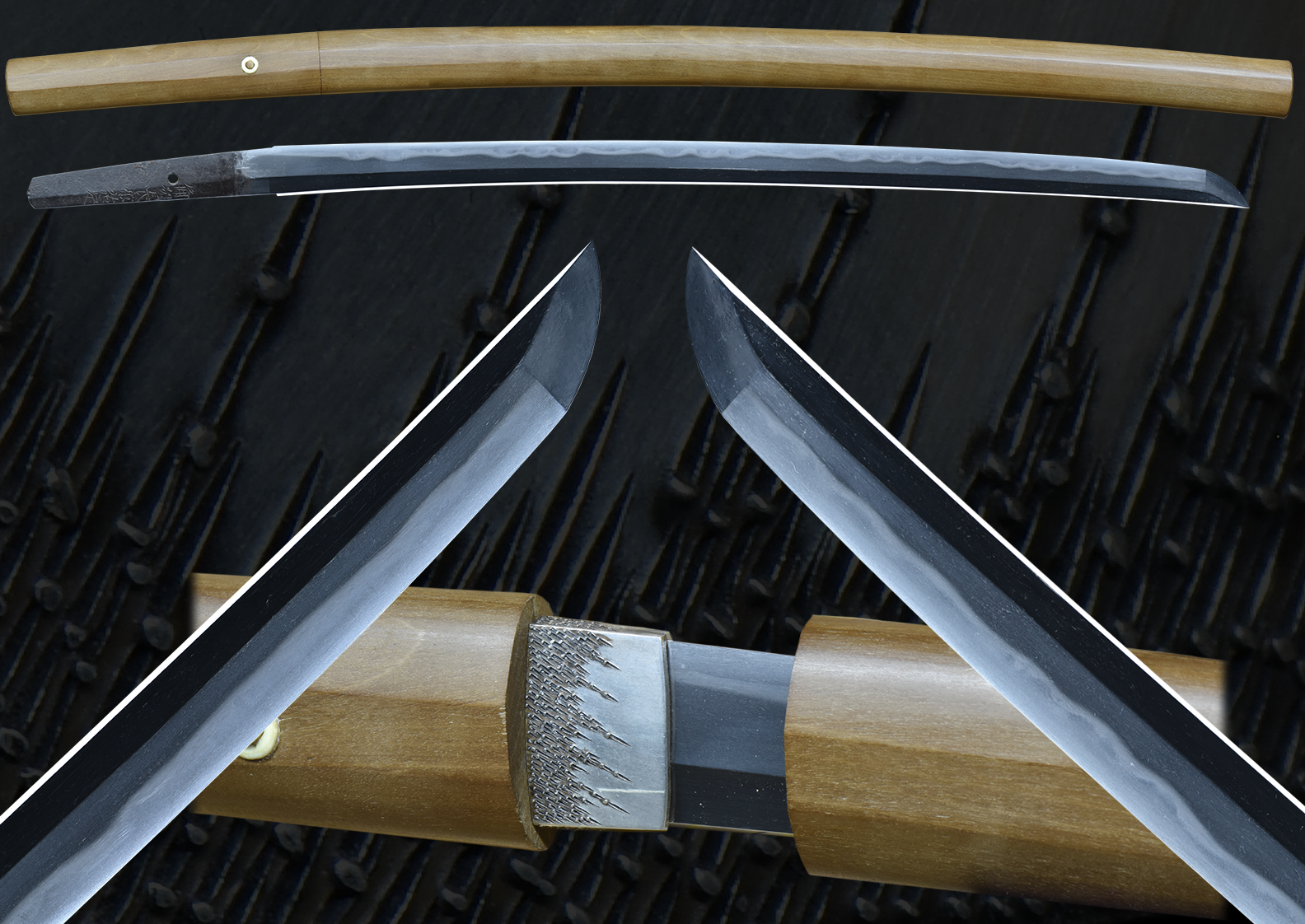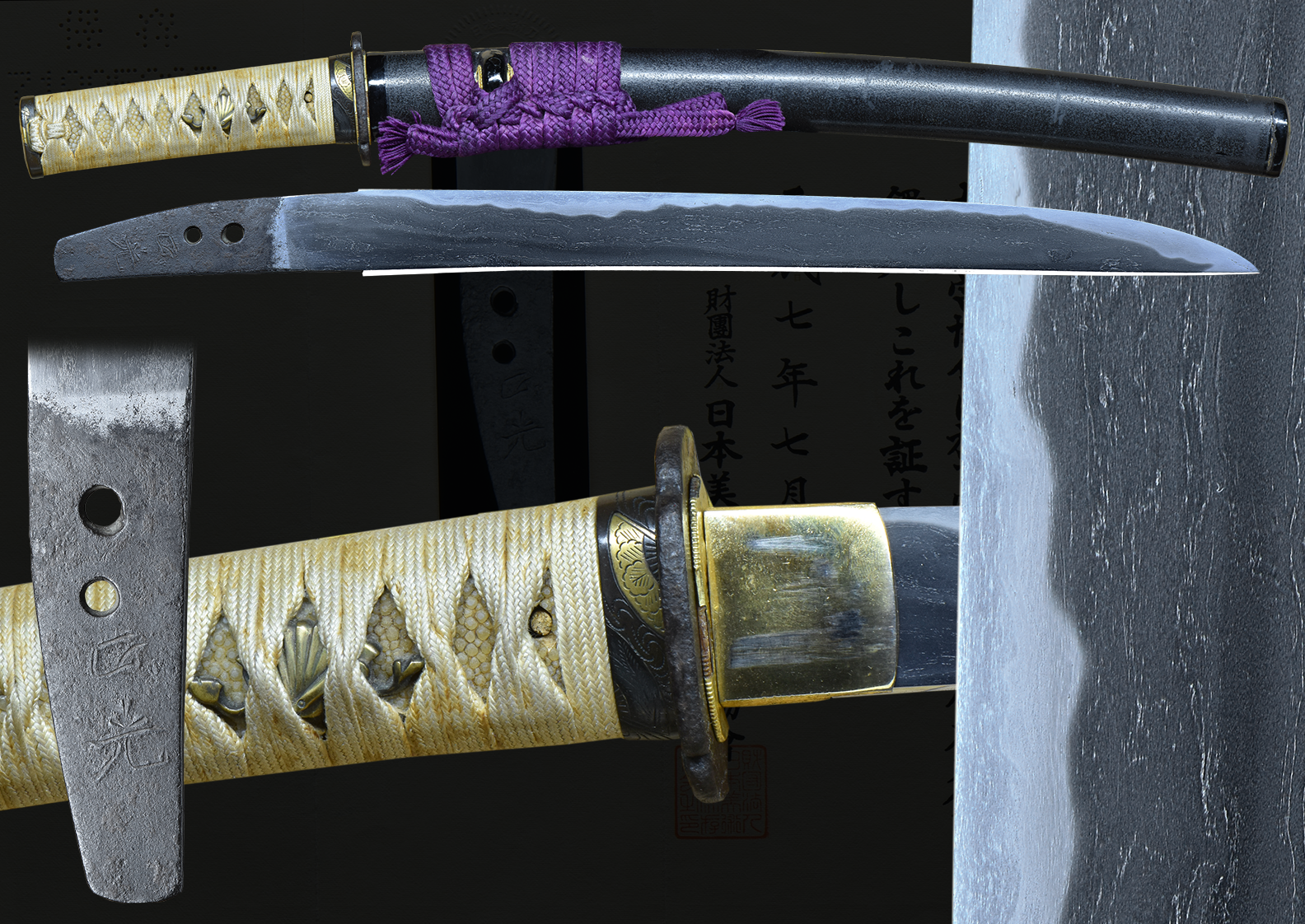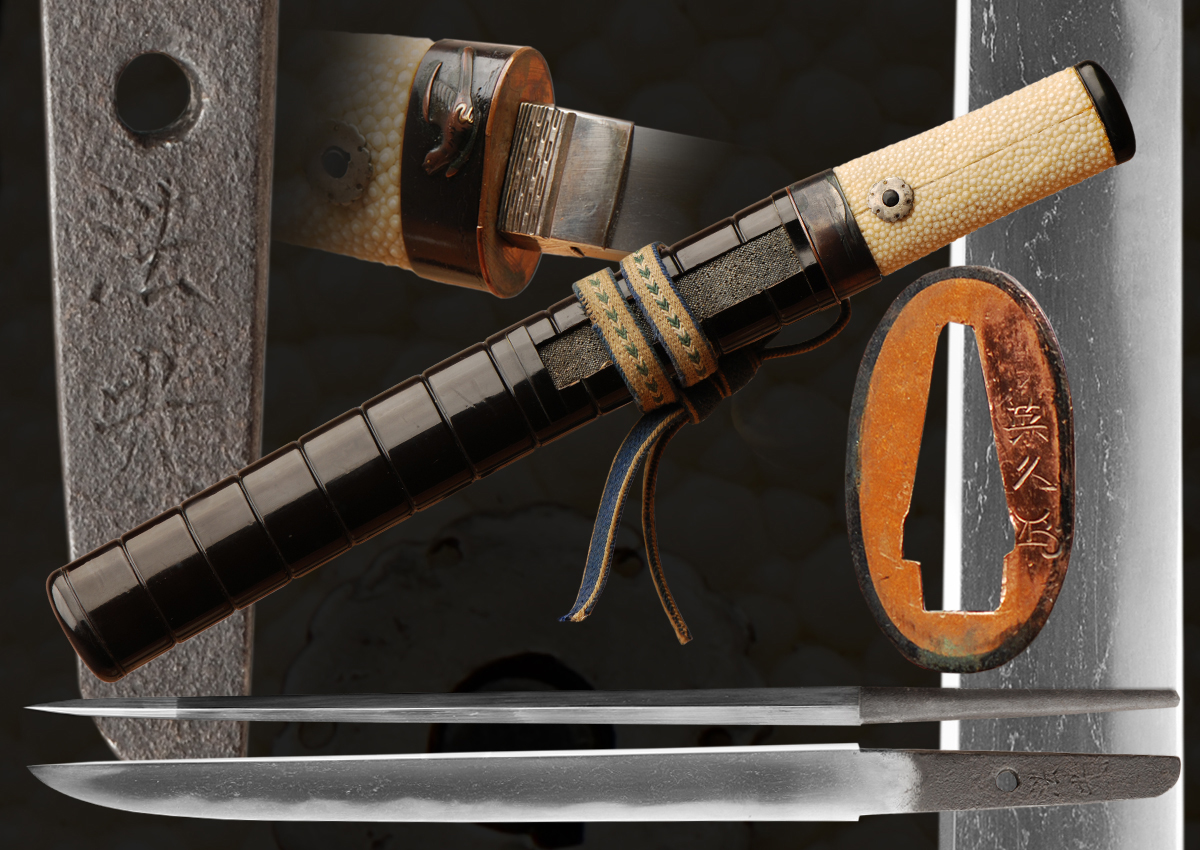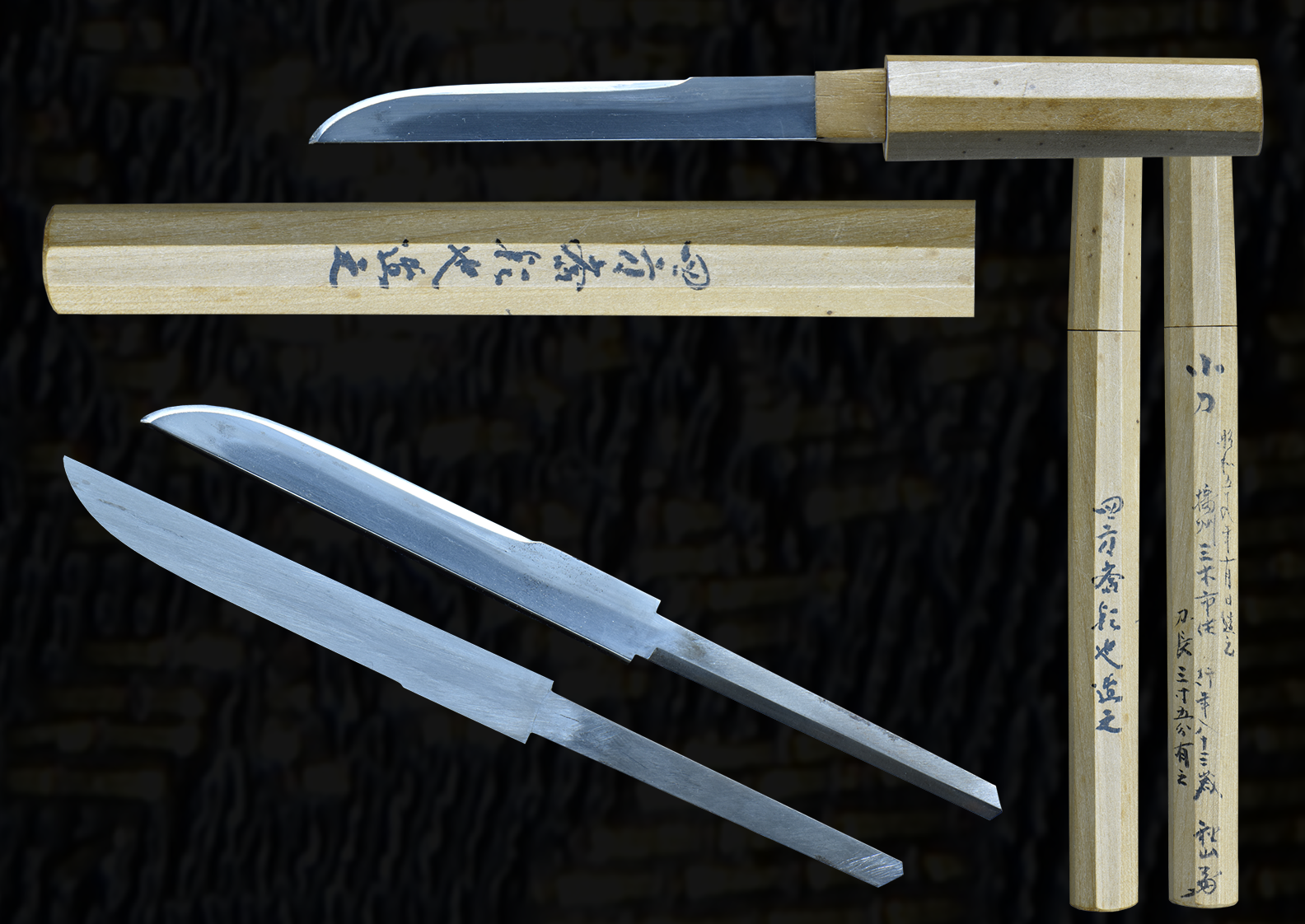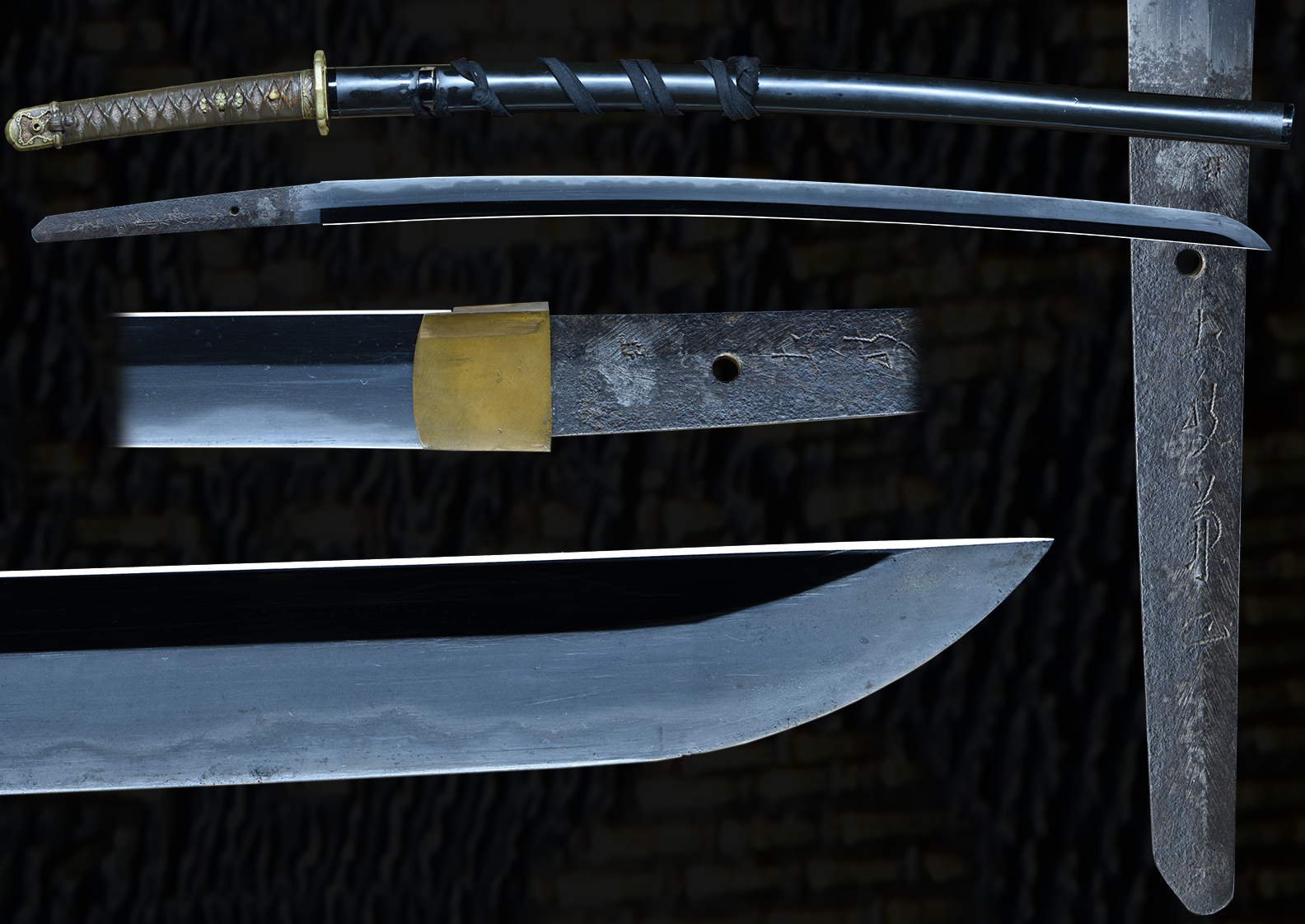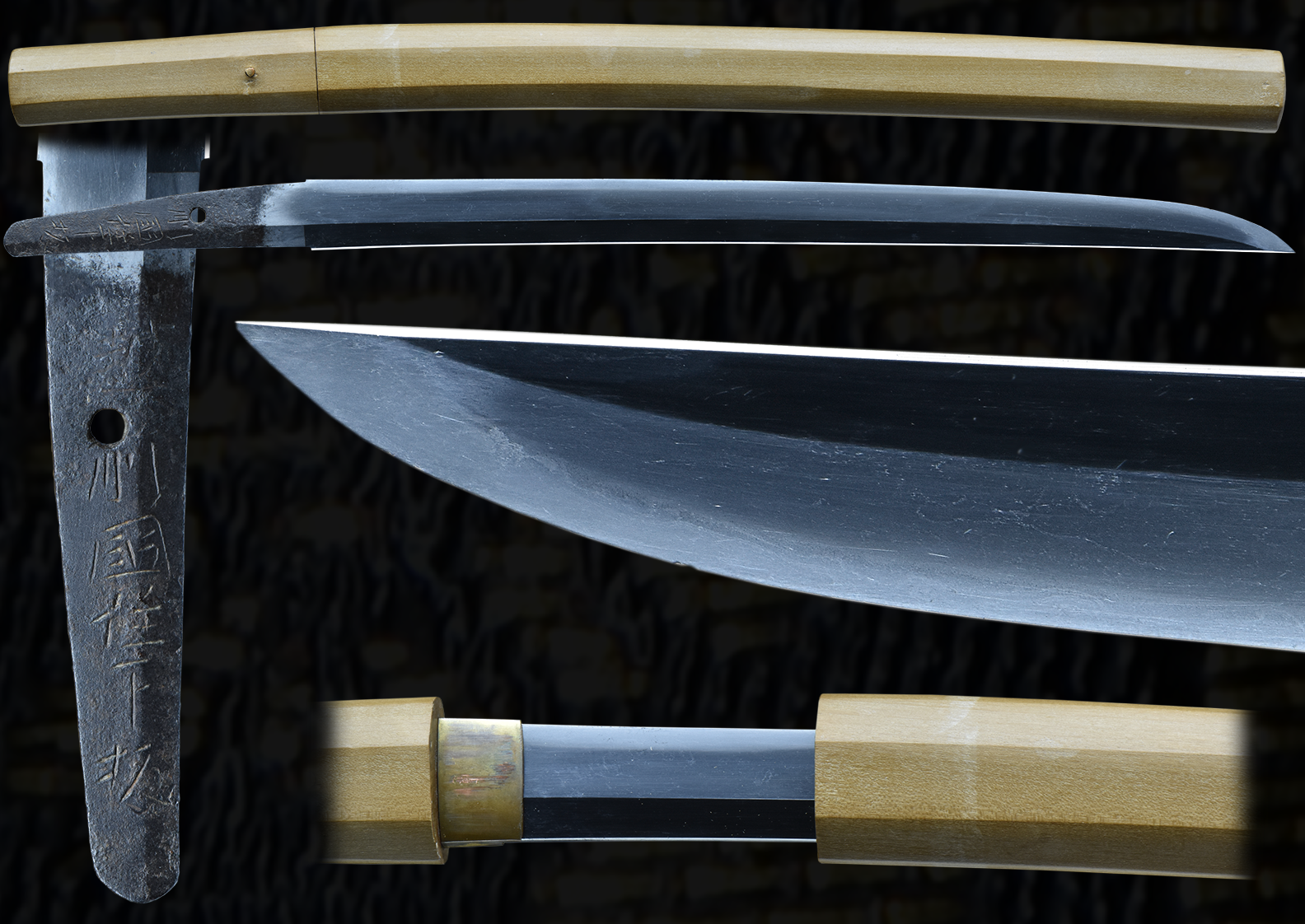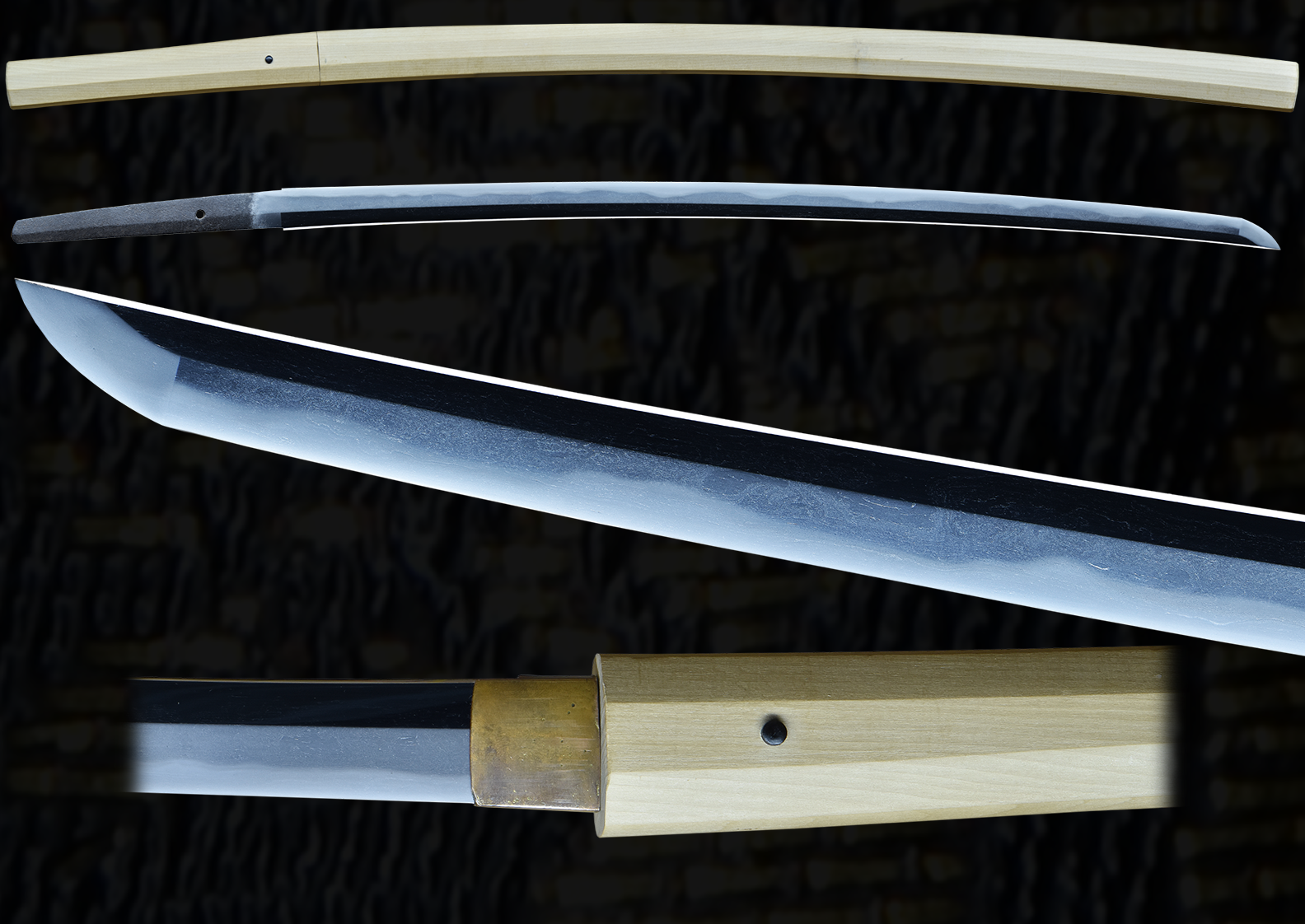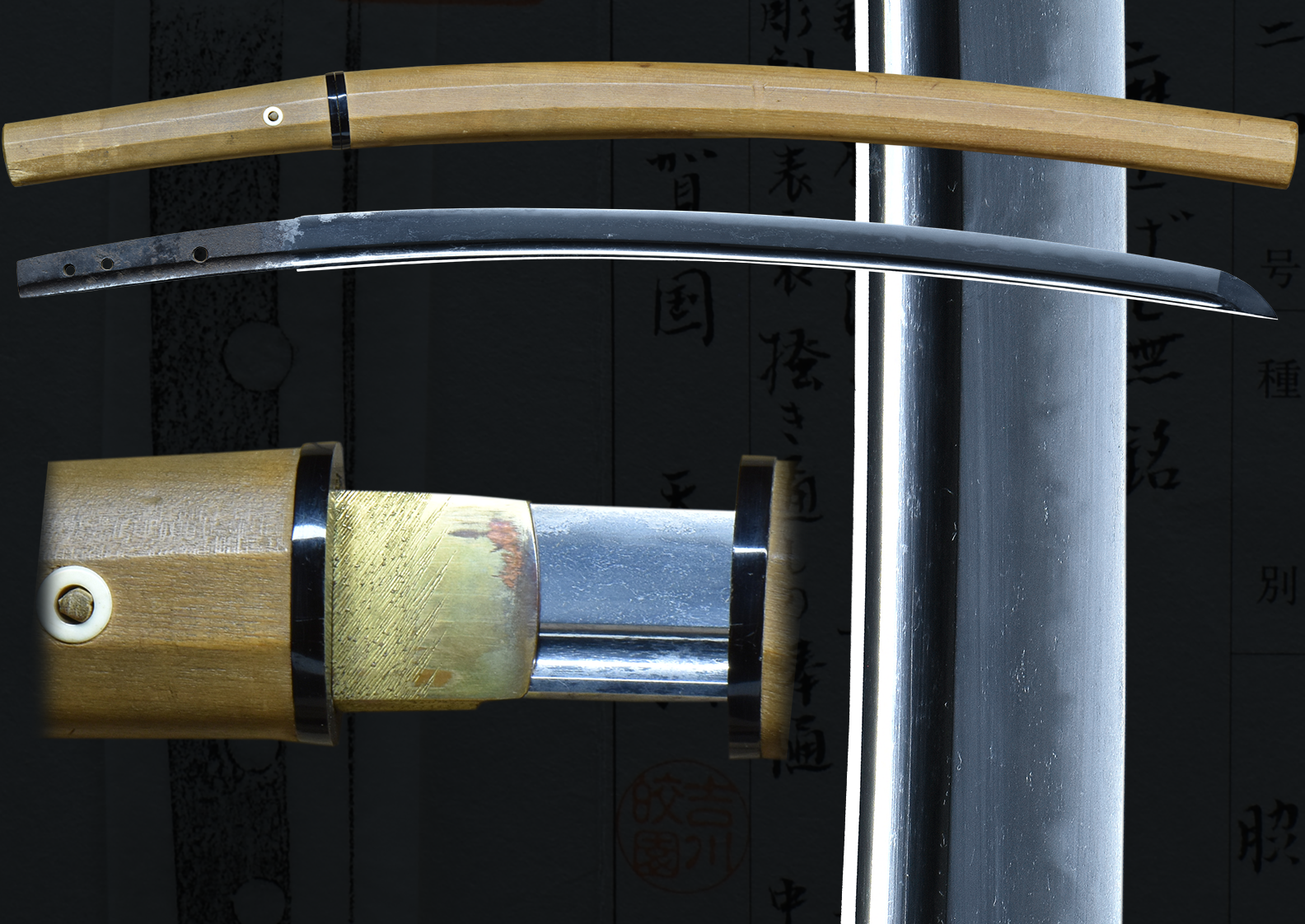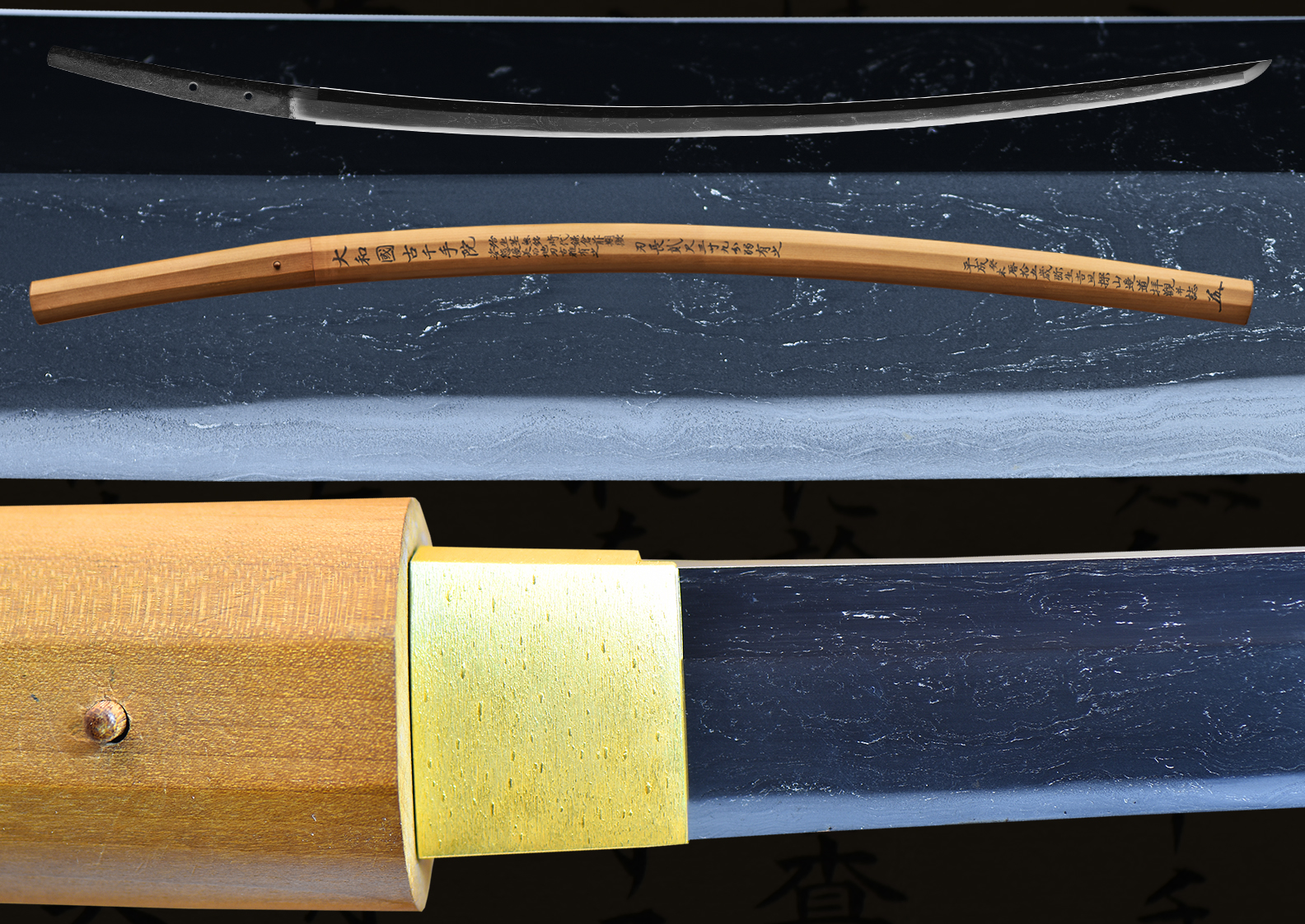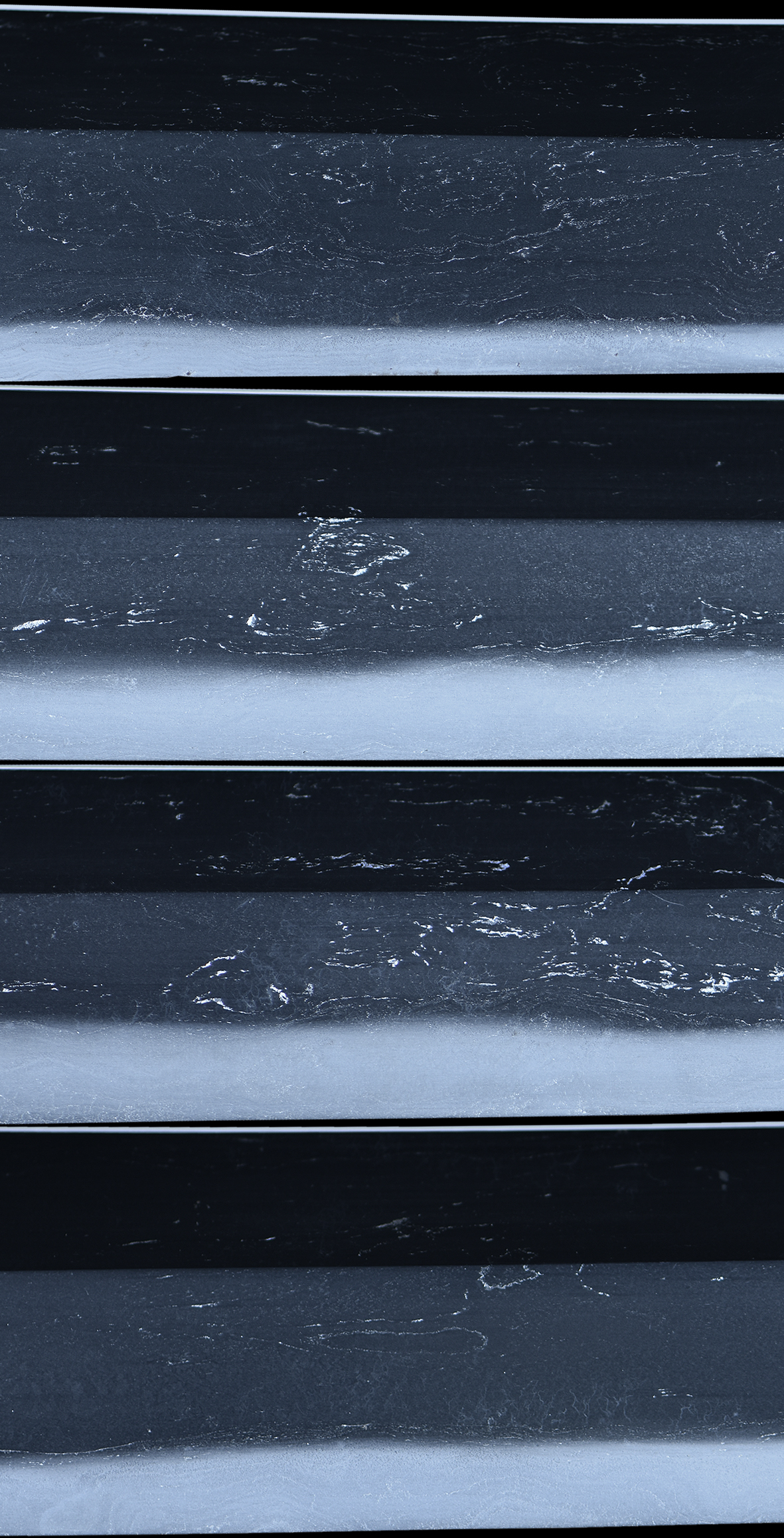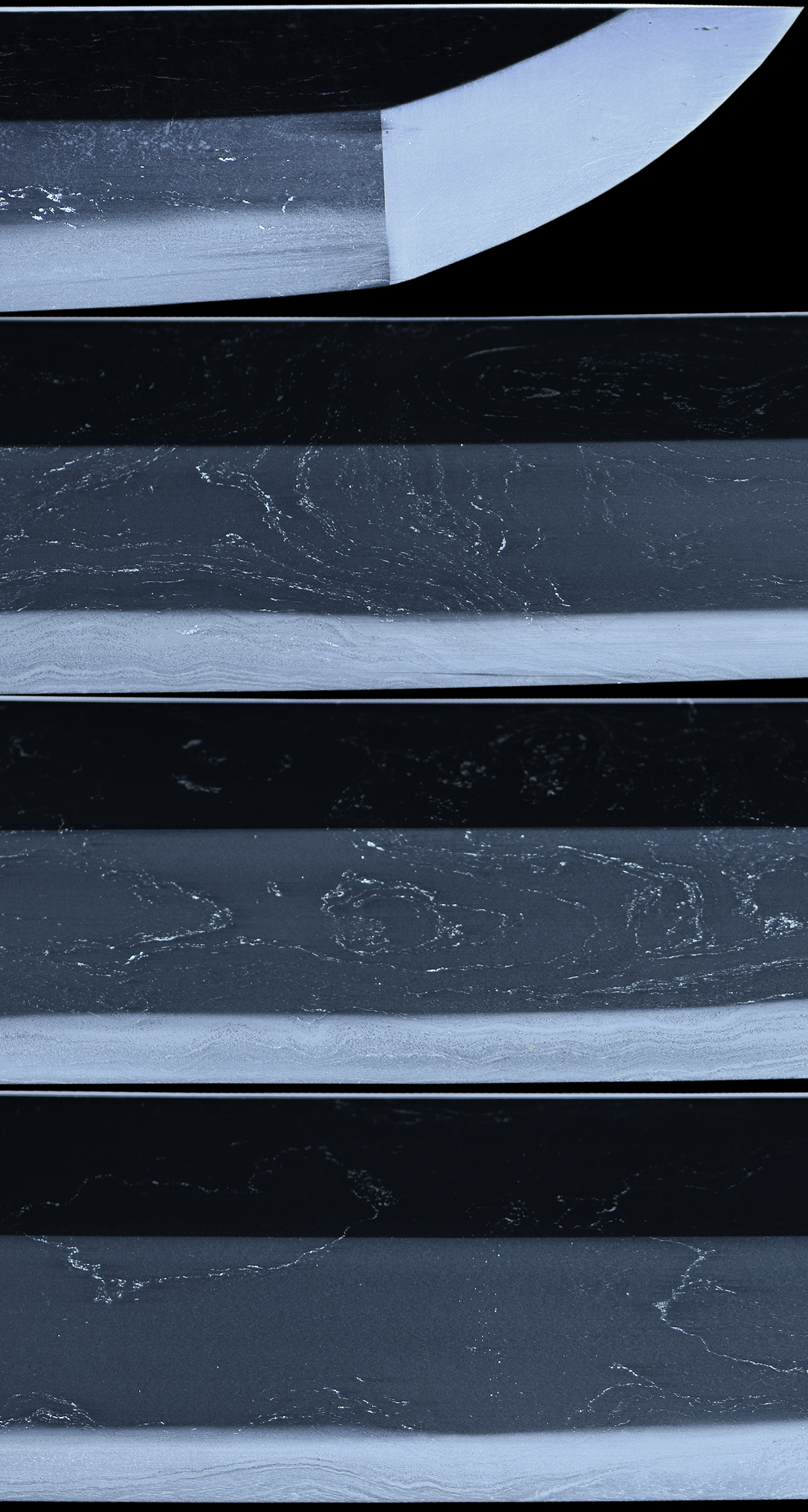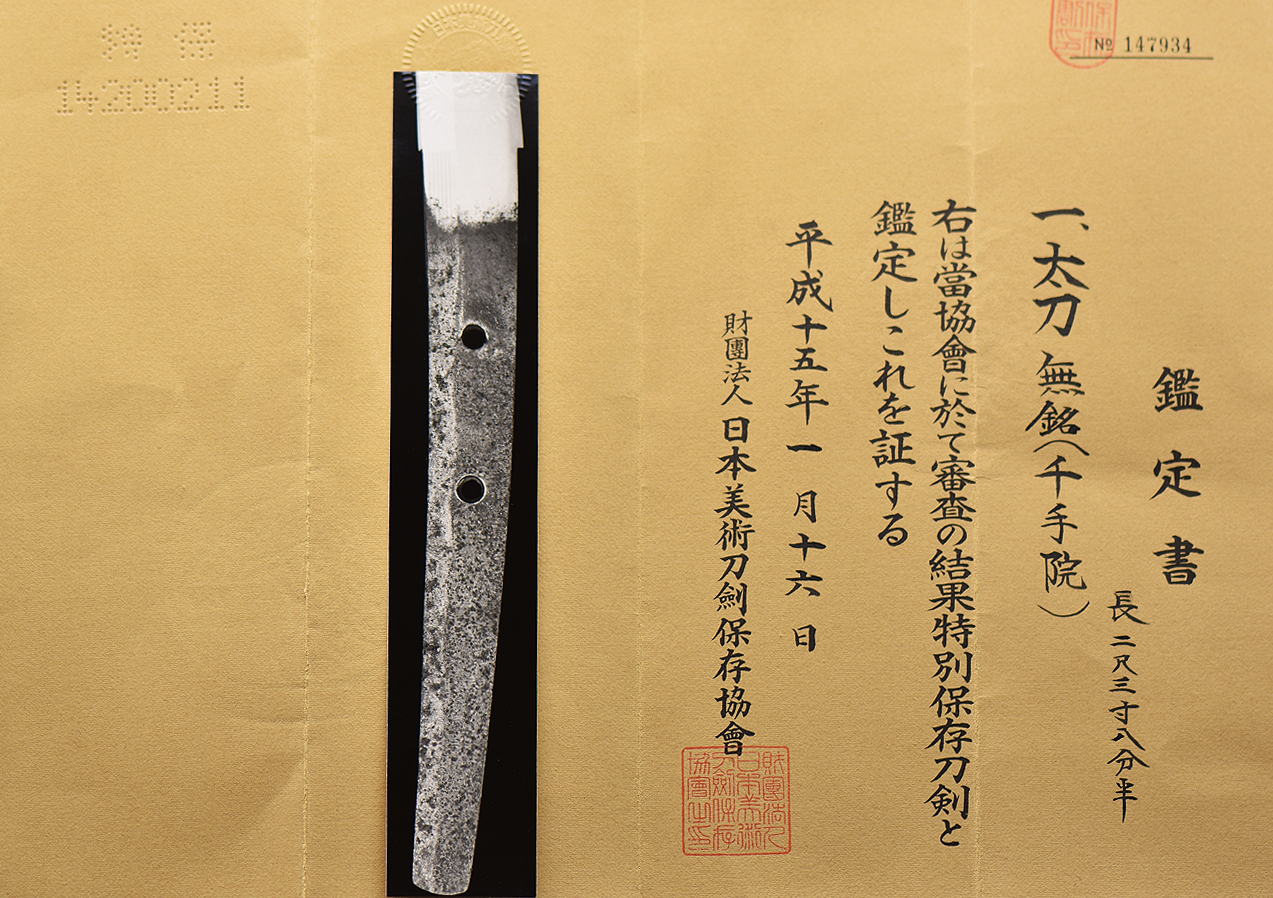An elegant Ko Senjuen tachi. When we talk of ko-senjuin swords we talk of swords made in the Heian era (782-1184) to the Kamakura era (1185-1332). The sayagaki by Tanobe sensei puts in early Kamakura. The fact that this sword is almost 1000 years old and in such good condition is astonishing in itself. This sword shows many amazing features, features that go back to an earlier time when the samurai were flourishing. The Ko-senjuin school is one of the most desirable schools to collect. Many of these swords have receive Juyo papers. This is amazing sword that has its original shape. The nakago is almost ubu with a raised machi. Shinogizukure, koshizori, high shinogi, ko kissaki, iroi mune. The Hamon is a brilliant ko gunome midare togare, hotsure, ha nie, deep ashi iri, kinsuji, short inazuma, hataraki, nado. Hadatatsu mokume nagare, masame near the ha, large and small chikei. There is midare togare utsure. The sword is polished, in shirasaya, with Tanobe Sensei Sayagaki. It is accompanied with NBTHK Tokubetsu Hozon certificate.
Information on The Ko-senjuin School:
The Yamato (大和) school of sword making originated in the Yamato Province and gave rise to the five oldest sword forging technologies. The five schools of the Yamato tradition consist of the Senjûin (千手院), Hosho (保昌), Taima (当麻), Tegai (手掻), and Shikkake (尻懸). The Senjûin school (千手院) is acknowledged as the earliest and most elegant of the five schools. The Senjûin school belonged to a sub-temple of the Tôdaiji Temple located near to the Senjû valley on the eastern foot of the Wakakusayama (若草山) in Nara. During the Tenroku Era (天緑 970-973) the Senjûin (千手院) school moved from Senjû valley near Wakakusayama (若草山) to a location northwest of the Tôdaiji Sangatsu-dô. It is said that in the reign of Horikawa Tennô (1086-1107) a smith named Yukinobu (行信) made a naginata there for the first time. There is some controversy as to these dates and the current thought is that he actually worked around the Ninpei Era (仁平) (1151-1154). After that, this trade of smithing was handed down for a number of generations and they were called the Senjuin kaji (千手院鍛冶). There were number of smiths in this group, but zaimei swords by them are almost non-existent.
Swordsmiths belonging to this school were connected to the Senjûin Temple of Nara. The workmanship in this school was not particularly uniform. The school is divided into three sub-schools. Those smiths working from the late Heian Era through the early Kamakura Era are known as Ko-Senjûin (古千手院) smiths. Those working from the middle of the Kamakura Era through the Nanbokuchô Era are called the Chu-Senjûin (中千手院) (middle Senjuin) smiths. Sue-Senjûin (末千手院) (late Senjûin) refers to the swordsmiths of this school who were active in the Muromachi period after the Ôei Era.
- Mei: Mumei
- Date: Early Kamakura
- Nagasa: 29 inches
- Sori: 25.0 mm
- Width at the ha-machi: 28.6 mm
- Width at the yokote: 16.5 mm
- Thickness at the mune-machi: 8.3 mm
- Construction: Shinogi zukuri
- Mune: Iori
- Nakago: Machi okure
- Kitae: Mokume Nagare with Masame near Ha
- Hamon: Midare Gunome Togare
- Boshi: ko-kissaki
- Condition: Polished
Click to Enlarge Image
SAYAGAKI INFORMATION:
大和國古千手院
殆生茎無銘 時代鎌倉前期歟
姿態優美而地刃古雅有之
刃長貮尺三寸九分弱有之
平成癸未暦拾五歳弥生吉旦探山邉道拝觀并誌「花押」
Yamato no Kuni Ko-Senju’in
Hotondo ubu-nakago mumei, jidai Kamakura zenki ya
Shitai yūbi shikamo jiba koga kore ari
Hachō 2 shaku 3 sun 9 bu chaku kore ari
Heisei mizunoto-hitsujidoshi jūgonen yayoi kittan Tanzan Hendō haikan narabi ni shurusu + kaō
Yamato no Kuni Ko-Senju’in
The tang is almost ubu but unsigned and the blade dates to the early Kamakura period.
It is of highly elegant shape and the jiba displays classical elegance.
Blande length ~ 72.4 cm
Examined and written by Tanzan Hendō [Tanobe Michihiro] on a lucky day in March of 2003, year of the sheep + kaō
(shipping and insurance included)
Email us if your interested in this item and remember to include the order number for this item: fss-831.
Click to Enlarge Image
Click to Enlarge Image
Click to Enlarge Image
Kantei-Sho (鑑定書) – Appraisal
tachi, unsigned: Ko-Senju’in (古千手院)
nagasa ~ 72.3 cm
According to the result of the shinsa committee of our society, we judge this work as authentic and rank it as Tokubetsu-Hozon Tōken.
January 16, 2003
[Foundation] Nihon Bijutsu Tōken Hozon Kyōkai, NBTHK (日本美術刀劍保存協會)
For Sale
